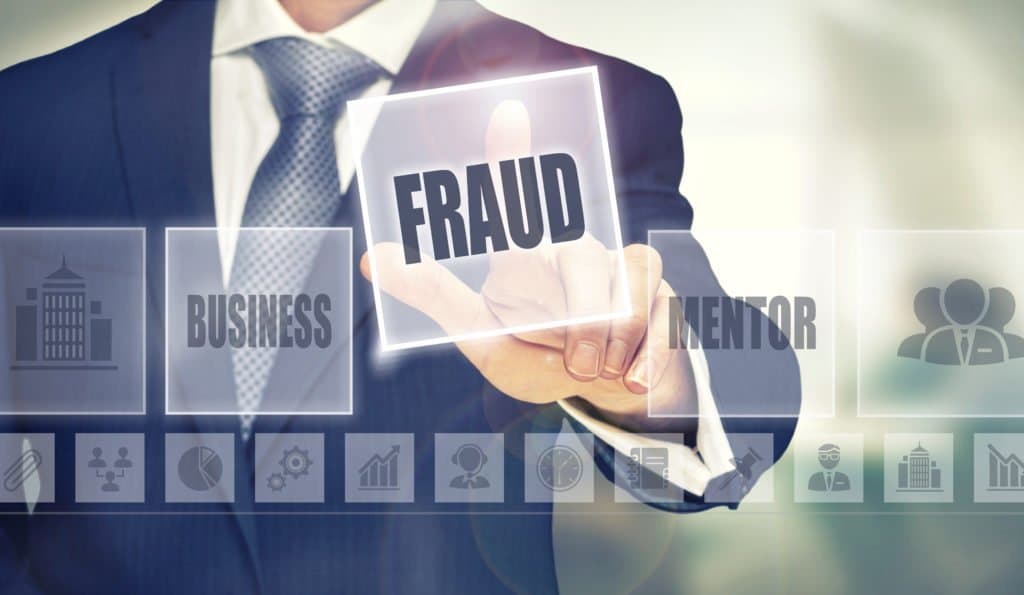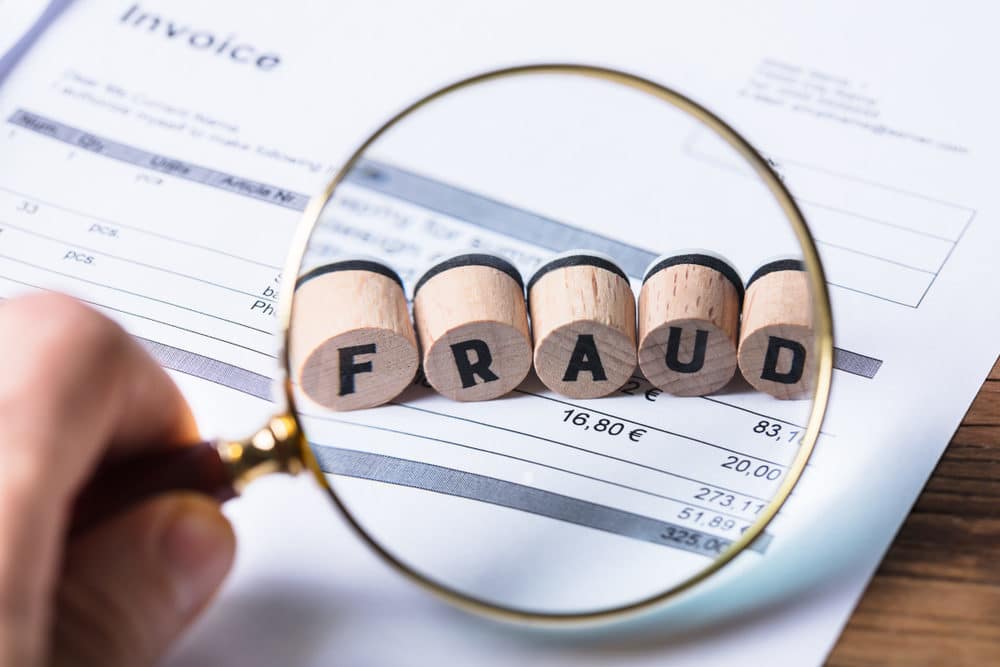Like residents of many other states, Ohioans were victimized by fraudulent unemployment claims in 2020, and some of them are just finding out now as the state sends out tax statements for the benefits. Unemployment benefit fraud is the latest wrinkle in the growing incidence of cybercrime, with perpetrators using phishing emails, “smishing” texts, and “vishing” voicemails to steal victims’ passwords and data.
Fraudulent unemployment is considered a “social engineering attack,” where the fraudsters trick or manipulate victims into divulging their passwords and data. It began last year when scammers used the dramatic rise in job losses due to COVID-19 to file fraudulent claims with state unemployment agencies, using names and Social Security numbers of real people but diverting the payments to their own bank accounts. In December, Ohio identified more than $330 million in fraudulent unemployment benefit payments.
As a result, many Ohio taxpayers will receive 1099-G forms from the Ohio Department of Job and Family Services (ODJFS) for unemployment benefits they never applied for and never received. The 1099-G states the amount of any benefits paid.
In Ohio, unemployment benefits are taxable income, but taxpayers who find they are victims of unemployment fraud will not be liable for any taxes on the condition that they report the fraud to the state.
IRS Guidance and Steps to Follow
- The IRS has told taxpayers who receive an incorrect Form 1099-G for unemployment benefits they did not receive, to contact the issuing state agency to request a revised Form 1099-G showing they did not receive these benefits. If you are unable to obtain a timely, corrected form from states, you should file a tax return reporting only the income you received.
- A corrected Form 1099-G showing zero unemployment benefits in cases of identity theft will help taxpayers avoid being hit with an unexpected federal tax bill for unreported income.
- Taxpayers do not need to file a Form 14039, Identity Theft Affidavit, with IRS regarding an incorrect Form 1099-G.
Other Support and Solutions for Fraudulent Unemployment
- Report the fraud online at unemployment.ohio.gov.
- Ohio has established a toll-free hotline 833-658-0394 which is open from 8 a.m. to 5 p.m. Monday through Friday.
- Discuss the fraud and resulting 1099-G tax statement with your tax advisor. You should not include the benefits in your income on either your state or federal tax return.
- Place a fraud alert on your credit reports with the three major credit reporting agencies – Equifax, TransUnion, and Experian. Fraud alerts are free and remain on your report for one year.
- Check your credit reports for signs of fraud such as new accounts opened, hard inquiries, and unfamiliar personal information.
- Notify your banks and credit card providers.
- Freeze your credit. This also is done by contacting Equifax, TransUnion, and Experian.
- Change all your affected passwords. This is another good reason never to use the same password for multiple sites.
General Protection from Cybercrime
The continuing increase in cybercrime requires vigilance and an understanding of how you may be vulnerable. Here are some general rules according to IT Senior Manager Ryan Bidlack:
Use strong passwords and consider using passphrases. Never share passwords with others or write passwords down.
- Before clicking on any link in an email:
- Check the sender’s email address to verify that you recognize it or it’s a trusted account. Watch for spellings and characters that may be transposed or inappropriate (such as a lowercase l [letter L] to replace a capital I [eye]).
- Carefully hover over the link, but do not click on it. The website address should appear on the screen. Try to verify that the link matches the address.
- It’s always better to err on the side of caution. If in doubt, pick up a phone and call the sender to verify the email is legit. Do not reply and ask the sender if the email is legitimate as the sender’s mailbox could be compromised and the malicious user could reply to the response saying the email is legitimate.
- Secure your devices with antivirus, firewalls, and spam filters for email.
- Patch your computers at least monthly (install Windows updates).
- Backup your computer hard drive to an external source at least weekly (physical external hard drive or cloud-based solution). If you are the victim of a social engineering attack, you could restore your computer’s hard drive to the latest safe backup.
If you believe you were a victim of fraudulent unemployment, Contact your Barnes Wendling advisor for further guidance.
Related Insights
Featured Post

Featured Client Testimonials
BW is a true partner to us. Their knowledge, expertise, and service are a valuable resource to us and play an important role in our success!
John Allen - Vice President of Finance, Kaufman Container

Featured Client Testimonials
I appreciate the exceptional tax advice we received over the years. The (BW team) has a good grasp of our business needs. Thank you for your excellent service.
John Griffiths - Owner, Rae Ann, Inc.

Featured Client Testimonials
The BW team has been fantastic to work with; both the team member at our office as well as at the partner level. Any issues or concerns are handled very efficiently and effectively.
Kelley Needham - Chief Executive Officer, Epilepsy Association

Featured Client Testimonials
Barnes Wendling has been our company accountants for over seven years. Their knowledge has been instrumental in helping us grow strategically during this time. And although we’ve seen many changes in our economy that we cannot control, we’ve always been able to trust the Barnes team to be by our side. The Barnes team feels like family. We can’t thank them enough for their support!
Christine Kloss - Controller, AT&F

Featured Client Testimonials
Barnes Wendling has been our company accountants for over 15 years. During this time, the business has grown exceptionally, and Barnes has kept pace, providing accurate, quality advice. Our finances are more efficient than ever, and the expense of hiring Barnes has been a definite positive add to our bottom line. I give my highest recommendation to their firm.
David Miller, MD - President, Retina Associates of Cleveland

Featured Client Testimonials
Barnes Wendling has provided us guidance and recommendations that have strategically helped strengthen our business and position ourselves for growth. We needed to hire a new VP of Finance and Controller this past year, and they were instrumental in helping us find the best candidates for our company.
Sara Blankenship - President, Kaufman Container

Featured Client Testimonials
We value the trust, accuracy of information, and reliability of Barnes Wendling and Mike Essenmacher personally. Mike has been instrumental as a trusted advisor on accounting, tax, and personnel issues. His advice is always accurate, and he is very reliable. His associates are also very talented.
Dominic Ozanne - President and CEO, Ozanne Construction Company

Featured Client Testimonials
We value Barnes Wendling’s expertise with all things accounting so we can operate our business using our strengths and allowing them to be our experts. They have also brought me a few business sale opportunities to allow me to grow my assets.
John Gaydosh - President and Metallurgical Engineer, Ohio Metallurgical Service

Featured Client Testimonials
Barnes Wendling (especially Lena) did a great job with our financials. Everything. It is extremely refreshing and comforting to know that all of our numbers are not only correct, but they are in the right place(s). Your diligence and reporting truly does make me (personally) feel better.
Thomas Adomaitis - Controller, Bialosky Cleveland

Featured Client Testimonials
I can wholeheartedly tell you that I have yet to work with an audit or tax team that have been more helpful, easy to work with, and committed than the team at Barnes Wendling- I have been through three different firms in the last few years.
Michelle Saylor, Former Controller, Aero Mag

Featured Client Testimonials
Floyd Trouten at Barnes Wendling CPAs is an “expert’s expert” when it comes to M & A accounting. Not only does he understand the evolving details of the Tax Code but he also sees the fine points of their application for owners, managers, investors, and financiers.
Mark A. Filippell, Western Reserve Partners

Featured Client Testimonials
The service is amazing at Barnes Wendling CPAs. The benefit is worth more than the cost. Sometimes it’s true that you get what you pay for.
Mark Boucher - Former Owner, Castle Heating & Air









